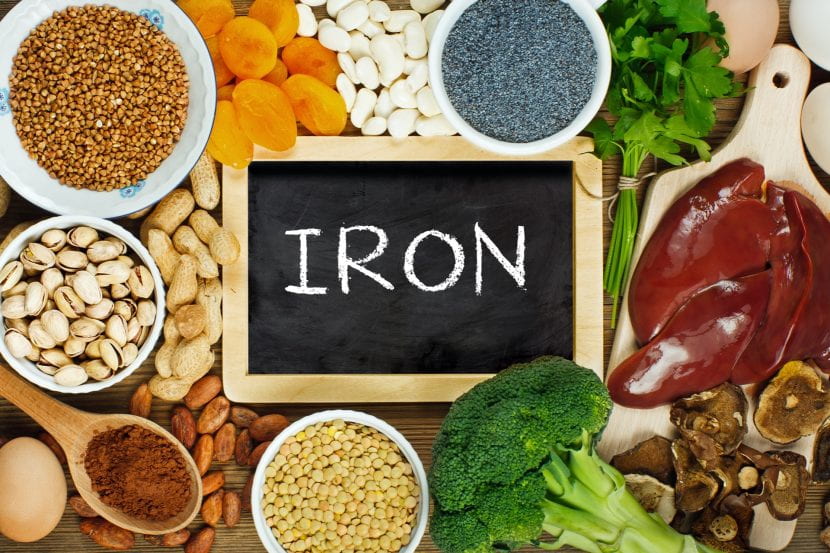Even though we only need them in small amounts, vitamins and minerals are important in our diet. They are needed for our bodies to develop and function properly. One of such important minerals is iron.
What is iron? What does iron do?
Iron is an essential mineral. It has many important jobs in the body, including transporting oxygen. Most of the iron is found in the hemoglobin of red blood cells which is responsible for carrying oxygen to all parts of the body. Oxygen is needed for energy and normal body function, like maintaining body temperature and food digestion. It also helps with organ and tissue growth.
Iron in the hemoglobin of red blood cells helps to transport oxygen throughout the body and thus cells can produce energy. It is especially needed during exercise. If you do not have enough iron in your body, physical activities can be exhausting.
How much iron do I need?
The recommended amount of iron varies depending on your age and sex. Grade school children need up to 10 mg of iron per day. Iron needs increase to 11 mg for male and 15 mg for female during age 14 – 18 due to their rapid growth. Women of reproductive age are most at risk for deficiency and need up to 18 mg of iron per day. The recommendation is even higher for pregnant women (27 mg). This is the reason why multivitamins include iron for pregnant women. Males age 19 and older and females age 51 and older need about 8 mg of iron per day.
What are some food sources of iron?
Iron from animal sources is absorbed more easily than from plant sources. Some animal sources of iron include beef, poultry, and seafood. Beef and chicken liver are especially rich in iron. Plant sources of iron include nuts, beans, vegetables and fortified grain products. Vitamin C and meat, seafood, or poultry can enhance the absorption of iron from plant sources. Cooking in an iron skillet is another way to boost your iron intake.
Remember a balanced, healthy diet with a variety of foods is the key to getting the iron you need. Refer to the following table for some examples of iron food sources.
| Food | Portion Size | Iron Content (mg) |
|
Fortified breakfast cereal |
1 cup | 18 |
| Oysters, eastern, cooked with moist heat | 3 ounces | 8 |
| Tofu, firm | 1 cup | 6 |
| Spinach, boiled and drained | 1 cup | 6 |
| Lentils, cooked | 1 cup | 6 |
| Kidney beans, canned | 1 cup | 4 |
| Chickpeas, boiled and drained | 1 cup | 4 |
| Beef, ground | 3 ounces | 2 |
| Turkey, ground | 3 ounces | 1 |
Source: USDA National Nutrient Database and National Institutes of Health
What happens when I do not get enough iron?
Iron deficiency is one of the most common nutrient deficiencies. When there is not enough iron, you are at risk for anemia, a condition in which there is not enough oxygen delivered throughout the body. Common symptoms of anemia include fatigue, dizziness, and headache.
There are several groups at risk for iron-deficiency anemia:
- Pregnant and menstruating women – these women have increased blood needs and require more iron.
- Older adults (65 and older) – people who are over the age of 65, have intestinal disorders, or eat a diet lacking Vitamin C, are also at risk since these factors can all affect iron absorption from the diet.
- Children – children have higher iron requirements due to their rapid growth
As you can see, iron is such an important nutrient. Remember that a balanced, healthy diet with a variety of foods is a good way to get the iron you need.
It is also possible to obtain enough iron in plant-based diets. Spinach is a delicious vegetable that is also a good source of iron. Try the following recipe adapted from Food Network.
Garlic Sauteed Spinach
Prep time: 6 min Cooking time: 4 min
Total time: 10 min Servings: 6
Calories per serving: 73
Iron per serving: 1.7 mg

Ingredients:
- 1 ½ lbs. baby spinach leaves
- 3 tbsp olive oil
- 6 cloves chopped garlic
- 2 tsp kosher salt
- ¾ tsp ground black pepper
Directions:
- Rinse the spinach well in cold water to make sure it’s clean. Spin it dry in a salad spinner.
- In a large pan, heat the olive oil and saute the garlic over medium heat for about 1 minute, but not until it’s browned.
- Add all the spinach, salt, and pepper to the pot, toss it with the garlic and oil, cover the pan, and cook it for 2 minutes.
- Uncover the pan, turn the heat on high, and cook the spinach for another minute, stirring with a spoon, until all the spinach is wilted. Lift the spinach to a serving bowl. Serve warm.
Let us know if you have any questions regarding iron by commenting below!
This post is written by Gabriella Statia and edited by Xiaoyu Duan.

